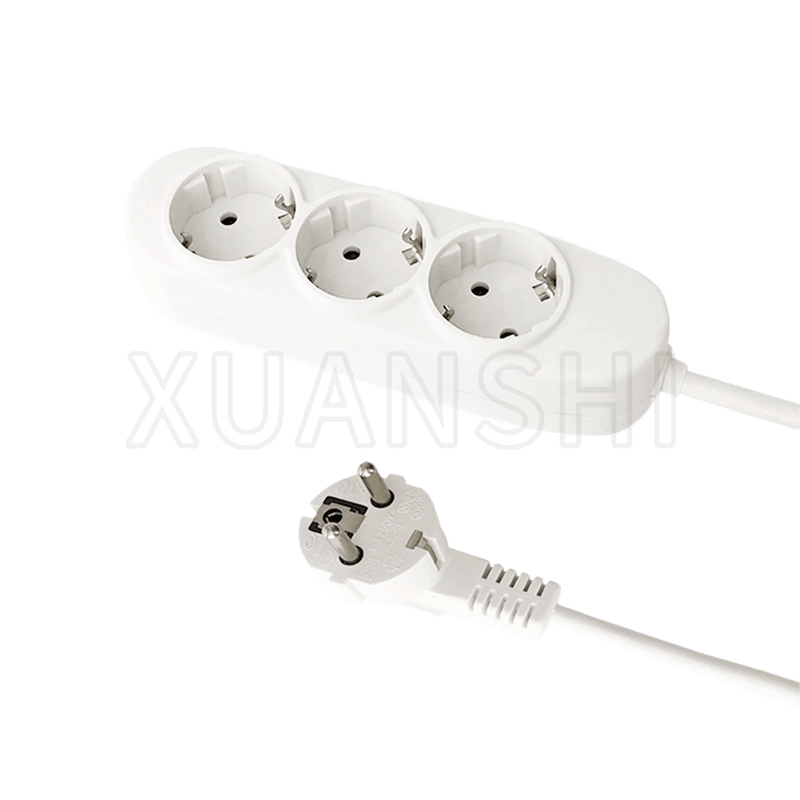The safety features of a 3 Way Power Strip can vary depending on the specific model and manufacturer. However, some common safety features found in quality power strips include:
Surge Protection: Surge protection is a critical safety feature that shields connected devices from sudden spikes in voltage. These spikes can occur due to lightning strikes, power grid fluctuations, or even switching on high-powered appliances. Surge protectors typically incorporate metal oxide varistors (MOVs) or other protective components that divert excess voltage away from connected devices, safeguarding them from damage. By suppressing voltage spikes to a safe level, surge protection ensures the longevity and reliability of sensitive electronic equipment such as computers, TVs, and home theater systems.
Overload Protection: Overload protection is designed to prevent the power strip from being overloaded with excessive electrical current, which can lead to overheating and potentially hazardous conditions. Modern power strips often feature circuit breakers or thermal fuses that automatically trip or disconnect power when the total power draw exceeds the strip's rated capacity. This safeguard not only protects the power strip itself but also prevents damage to connected devices and mitigates the risk of electrical fires caused by overheating.
Grounded Outlets: Grounded outlets are essential for ensuring electrical safety by providing a pathway for excess electrical current to dissipate harmlessly in the event of a short circuit or electrical fault. Grounding eliminates the risk of electric shock and reduces the likelihood of electrical fires by directing potentially dangerous currents away from users and equipment. Power strips with grounded outlets typically feature a third prong or grounding pin that connects to the grounding wire in the electrical system, effectively grounding the entire strip and enhancing its safety.
Fire-Resistant Casing: Fire-resistant casing is a crucial safety feature that helps mitigate the risk of fire in the event of a malfunction or electrical overload. Power strips constructed from flame-retardant materials, such as high-temperature thermoplastics or metal enclosures, are less likely to ignite or sustain combustion if exposed to heat or flames. By containing and suppressing potential fires, fire-resistant casing enhances the overall safety of the power strip and reduces the risk of property damage or personal injury.
Child Safety Features: Child safety features are designed to prevent accidental electrical injuries by making it difficult for children to access the outlets on the power strip. These features may include sliding outlet covers, tamper-resistant shutters, or built-in mechanisms that require simultaneous pressure on multiple points to insert a plug. By restricting access to the outlets and blocking the insertion of foreign objects, child safety features reduce the risk of electric shock, burns, and other injuries, making the power strip safer for use in households with young children.
EMI/RFI Filtering: EMI/RFI filtering is a feature that helps eliminate electromagnetic interference (EMI) and radio frequency interference (RFI) from the power supply, ensuring clean and stable power delivery to connected devices. EMI and RFI can degrade the performance of sensitive electronic equipment, introduce noise or interference into audio/video signals, and disrupt communication systems. Power strips equipped with EMI/RFI filtering components, such as capacitors and inductors, suppress unwanted electrical noise and disturbances, providing a cleaner power source and enhancing the overall reliability and performance of connected devices.
European 3 way power strip JL-3,XS-XBD30
